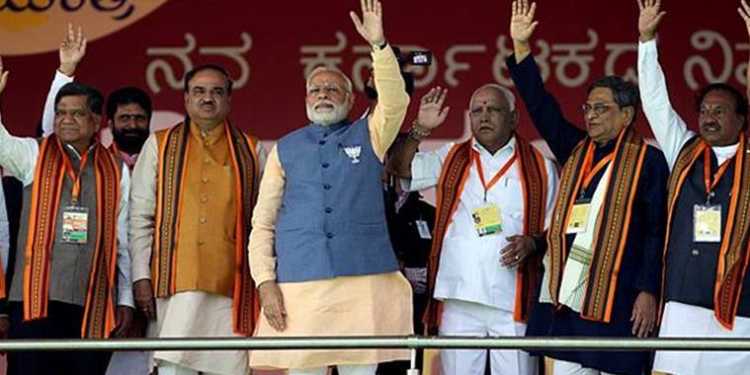The election in Karnataka held on the 12th of May opened the Pandora’s Box for the Congress. The religion and caste equation which the Congress relies on did not work this time. It failed in dividing the people of Karnataka on the national basis and subsequently on the caste basis as well. The Congress distanced itself from two of the largest groups in Karnataka, both the Lingayats and the Vokkaligas. While the Lingayats vote went to the Bharatiya Janata Party (BJP), Janata Dal Secular snatched the major chunk of Vokkaliga votes from Congress’s grasp. There are many more instances which shows that the people of Karnataka have changed the dynamics for the parties in Karnataka. The election results have shown that the people had enough of Congress and the JD(S) is not going to reemerge as a big party anytime soon. The BJP too has received its fair share of surprises following the results, which gave BJP ten to fifteen seats less than what it had originally hoped for in Karnataka. Understanding the results which have emerged will lead to a better knowledge of how the people in Karnataka have chosen their favorites this time and what is its effect going to be in the future elections.
It is important to understand the demographics of Karnataka before one decides to enter into the political scenario of the state. Karnataka could be divided into five parts- Mumbai Karnataka, Karnataka-Hyderabad, Coastal Karnataka, Vokkaliga Karnataka and Eastern Karnataka. The Coastal belt has a mixed population and the BJP emerged as a clear winner from this region. The BJP gained 12 seats from this region whereas the Congress lost seven seats from the previous election. This shows that PM Modi’s and Amit Shah’s rallies must have clicked with the voters from this region, who chose the BJP over the other parties.
The Mumbai-Karnataka belt is dominated by the Lingayats who were actively wooed by the Congress prior to the elections. The results show that the methods of the Congress drastically failed as they were able to get just 20 seats while the BJP won 37 seats and the other 4 went to the JD(S). The JD(S) and the Congress emerge as the biggest losers from this belt. The Lingayat votes made the difference for both Congress and JD(S) and restricted their progress in the state.
What is probably the biggest surprise from the whole state came from the Muslim dominated Hyderabad- Karnataka region, where the BJP has won seven more seats than the previous elections. The Congress managed to retain 12 of the 14 seats from this area, showed that the majority of the Muslim votes went to the Congress. The BJP was able to snatch away a sizable chunk from their vote share. The vokkaliga dominated southern belt has come as a surprise element for both the BJP and the Congress. The JD(S) emerged as the winner from this region while the Congress lost the maximum 6 seats from this area. The BJP was not able to rope in vokkaliga votes as much as it needed to and it is probably the reason why BJP fell short of the 113 mark.
These results prove that there has been a dramatic shift in how the people are viewing the national and the regional parties. The JD(S) might have got 37 seats but it clearly seems to be losing in its home state. The Congress needs to rethink why both the Vokkaliga and Muslims voters have turned away from them. The Vokkaligas have been irked by the efforts of Siddaramaiah to end the hegemony of JD(S) leader HD Deve Gowda. HD Deve Gowda is from the Vokkaliga community and is highly respected. This shows why the JD(S) leaders have won from the Vokkaliga dominated areas. The Lingayat’s too have sidelined Congress and instead gone with BJP owing to the divide Siddaramaiah wanted to create in the community.


































